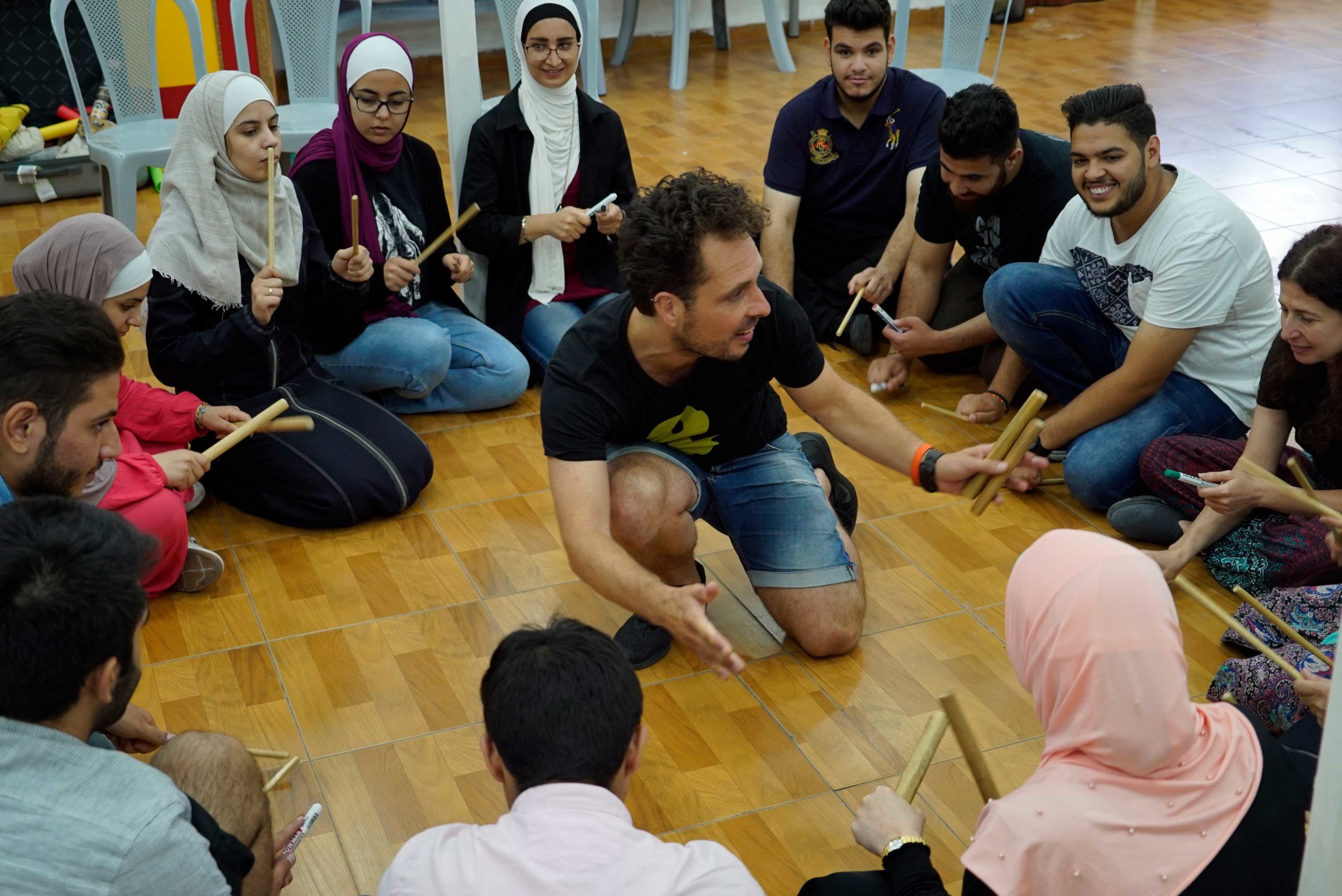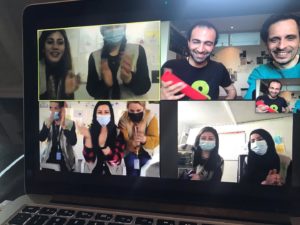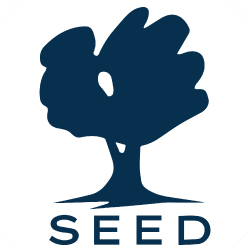The Power of Music
SEED has an exciting new initiative for its psychosocial support (PSS) activities focused on nonverbal communication with Sounds of Change (SoC). SEED spoke with Lucas and Hashem from SoC about the project.
After playing music professionally for 15 years, Lucas Dols wanted to use music not just on the stage, but also to build communities and change lives. In his search, Lucas traveled with friends to Jordan to work in Zaatari Camp. There, he learned that music can be used as a tool to connect people, bring creativity to the surface, and allow people to think of their environment in more positive ways.

“That was the start of my journey of using music differently.”
Lucas told SEED Foundation in early 2021.
Lucas then traveled to Lebanon to give training sessions on ways community builders could incorporate music into their work with children and teenagers. There he met Hashem Kabreet, also a musician. “I play percussion instruments and the chicken,” said Hashem, holding up a plastic squeaky chicken toy that he keeps a beat. Hashem had moved to Lebanon five years after the war in his country, Syria. While he lived in Lebanon, Hashem worked with local NGOs which used creative arts as a part of their approach in working with refugee children from Syria, Palestine, and also children in need from the host community. Both believing in the power of music, Lucas and Hashem began traveling and conducting training sessions together. In 2017, Lucas started Sounds of Change, which Hashem has been a part of since its establishment.
“We are always looking for innovative ways for people to communicate and process their trauma, but not everyone likes to talk. That is why we are very excited to incorporate a creative, nonverbal element to SEED’s PSS activities,” said Joshua Lee, SEED’s PSS technical advisor.

One of Lucas’s goals is to make music education accessible to everybody, he believes everyone needs a medium to communicate through besides language and speech. “Language is not the only way to communicate, especially when you think about PSS activities where participants are often traumatized, scared, and feel limited in their self-expression,” Lucas explained.
Lucas and Hashem commented that although becoming a professional musician takes years of practice and hard work, professionals are not the only ones who can create music. Creating music can be less complex. “Music can be created by playing with a squeaky toy or some chopsticks,” said Hashem. “Music can be clapping your hands,” Lucas said while clapping his hands to a beat. This form of music, whereby one uses their whole body to produce a beat, is the approach that Sounds of Change uses in its sessions.
To train PSS staff and community builders on how to conduct these types of musical sessions with children and teenagers, Sounds of Change has created three components: content, methodology, and facilitation. The training uses an action-based learning approach, so that participants will not rely just on listening to the trainers explaining how a technique works; instead, they are practicing the techniques with each other, their families, and the groups they work with.
“By the end of this collaboration, Sounds of Change’s colorful, creative, and expressive music will be integrated throughout SEED’s PSS programming. The hope is that this provides a unique, powerful way for PSS participants and the community to express themselves and connect to each other,”Joshua commented.
SEED’s Psychosocial Support Services (PSS) staff, which includes community coordinators and mobilizers who are from the communities we work with, participated in four training sessions with Sounds of Change.
If you feel the rhythm move you, and want to help us provide this service to all of the youth SEED works with, click the DONATE button
Due to COVID-19 restrictions, the Sounds of Change team cannot conduct the training in-person so SEED’s service delivery team records their practice sessions so the trainers can give feedback on their delivery and body language.
